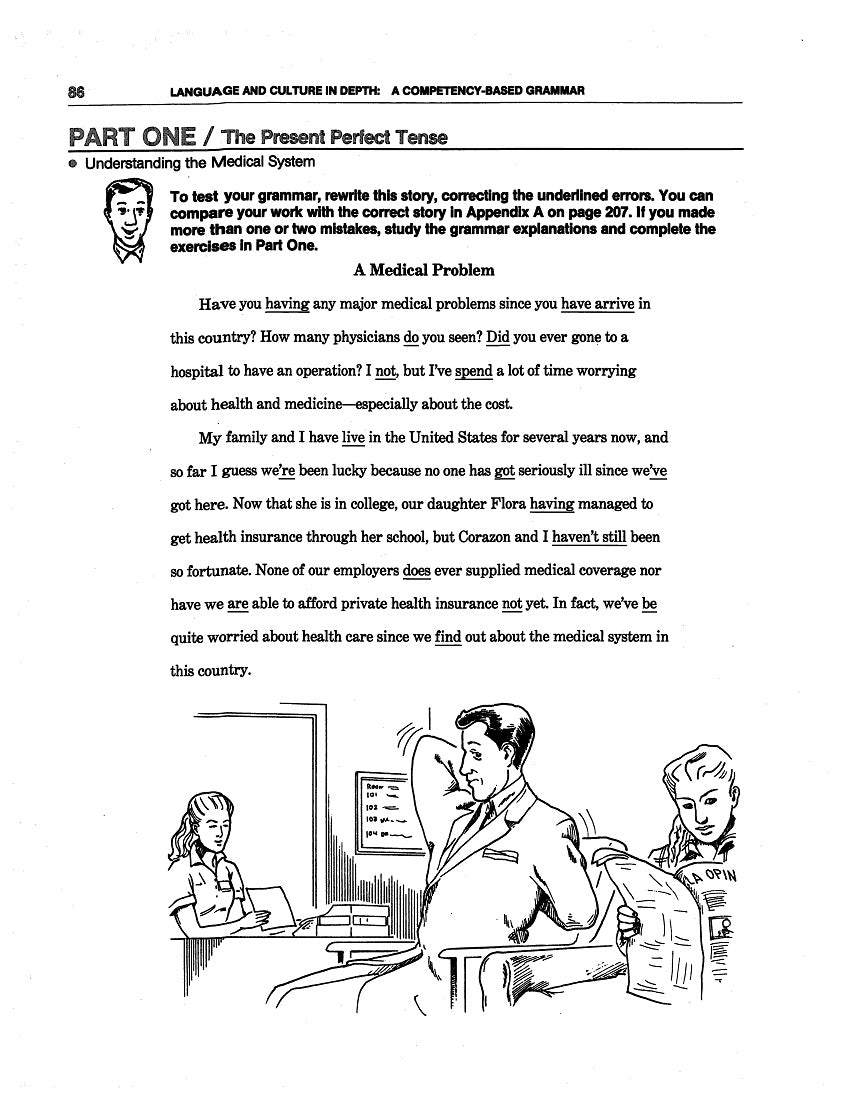1
/
of
6
Work/Life English
D-13.04 Use & Contrast Present & Past Perfect (Continuous) Verb Forms, Patterns & Applications
D-13.04 Use & Contrast Present & Past Perfect (Continuous) Verb Forms, Patterns & Applications
Regular price
$5.00 USD
Regular price
Sale price
$5.00 USD
Unit price
/
per
Parts One To Four of Chapter 5: Present & Past Perfect (Continuous) Tenses (“Getting Help”) of WorkLife English Grammar 5: Language & Culture in Depth, pages 85-106
22 pages
Who It’s For: High Intermediate to Advanced Teachers, Helpers, & Students Continuing to Progress in Coverage of Present- & Past-Perfect (Continuous) Verb Tenses
Why It’s Useful: Chapters purporting to cover the Perfect Aspect of verb phrasing have a lot to deal with. The “helping verbs” have/has or had need to precede a Past Participle, (the “3rd Verb Part”), such as lived, had, done, begun, gotten, and many others. And Present Participles (the “4th Verb Part”) like living, having, doing, beginning, getting, can follow the participle been, resulting in a Perfect Continuous Tense pattern. Whether time expressions with for, since, until, already, still, etc. appear in sentences or are just understood, meaning differences in the wording of verbs can be subtle. Hopefully, combining amusing presentations and effective grammar instruction with serious subjects like “Medical Systems,” “Alternatives to Legal Action,” “Tax Returns,” and “Disputes,” will result in “Getting Help.”
What You’ll Do:
[1] In the page 85 Chapter 5 Opener, view the photo montage suggesting Medical & Legal Situations. Notice both the targeted Competencies and applied Grammar. Think ahead to the kinds of Content and Pedagogy you expect to find in the Chapter.
[2] In Part One on pages 88-93, begin “testing your grammar” by correcting mistakes in the story “A Medical Problem.” Go over Forms of the Present Perfect Tense. Understand Uses of the Present Perfect: Activity in Unspecified Past Time and Activity in the Time Period from the Past to the Present. Use your knowledge to complete and check Exercises A-I, focusing on the meanings of your verb phrases.
[3] For Part Two (pages 94-98) and Part Three (pages 99-103), the introductory anecdotes to correct are titled “A Legal Problem?” and “Tax Problems.” Targeted Grammar Topics are “The Present & Past Perfect (Continuous) Tenses in Contrast.” Notice that there is new material incorporating “Time Clauses” into the instruction. Follow procedures comparable to those suggested in step [2] above.
[4] Use Part Four on pages 104-106 to review, summarize, and compare. In real life, its material will help in “Describing Disputes & Solutions.”
Couldn't load pickup availability












